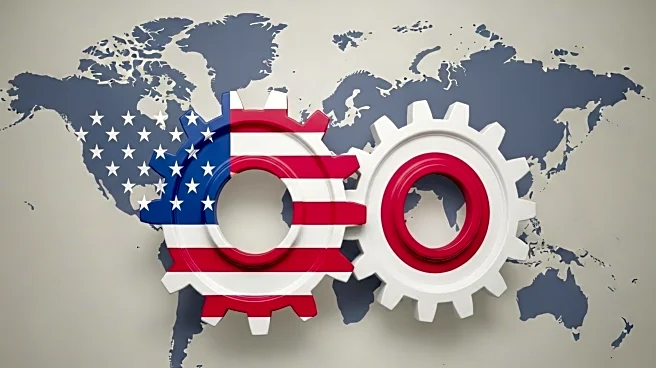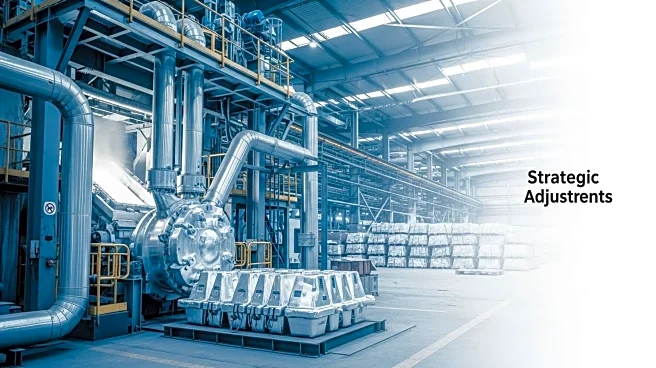What's Happening?
The U.S.-Japan trade agreement, finalized in July 2025, has significantly altered economic dynamics across North America and Asia. The deal reduces tariffs on Japanese automobiles from 25% to 15% and secures a $550 billion investment package from Japan into U.S. strategic sectors. This agreement has created a complex web of sector-specific impacts, particularly affecting manufacturing and agriculture. Japanese automakers like Toyota and Honda are facing substantial tariff burdens, with Toyota reporting a $9.5 billion loss and a 16% drop in full-year operating profit. However, the regulatory alignment allowing U.S. automotive standards in Japan has opened new markets for American firms like General Motors and Ford. Additionally, the 'China Plus One' strategy has accelerated supply chain diversification, with Japanese manufacturers relocating production to Southeast Asia to mitigate U.S. tariff risks.
Why It's Important?
The U.S.-Japan trade agreement holds significant implications for various stakeholders. For U.S. automakers, the reduction in tariffs and regulatory alignment presents an opportunity to expand into the Japanese market, potentially increasing competition and market share. Conversely, Japanese automakers may face increased pressure to innovate to maintain their market position. The agreement also benefits the U.S. agricultural sector, with Japan agreeing to a 75% increase in rice imports and $8 billion in purchases of corn, soybeans, and fertilizer. This surge in demand is expected to boost earnings for U.S. agribusinesses. However, Japan's domestic farmers may struggle to compete with subsidized U.S. imports, potentially leading to challenges in the Japanese agricultural sector.
What's Next?
Investors are advised to adopt a hedged approach, prioritizing companies with diversified supply chains and strong R&D pipelines. In manufacturing, firms in Malaysia or Vietnam with robust export capabilities may be favorable. In agriculture, U.S. agribusinesses with established export infrastructure are likely to benefit. Additionally, monitoring the Alaskan LNG offtake agreement and U.S. energy exports to Japan could provide insights into stabilizing energy costs for Asian manufacturers. As policy clarity emerges, the balance between tariff relief and structural shifts in global trade will likely influence Asian equities.
Beyond the Headlines
The U.S.-Japan trade deal, while providing short-term stability, leaves unresolved tensions, such as the Trump administration's execution of the agreement. The long-term impact on Japanese pharmaceutical firms, which face regulatory risks and potential future tariffs, remains uncertain. Investors should weigh the immediate benefits of the $550 billion investment against long-term uncertainties, including Japan's inflationary pressures and weak GDP growth.














